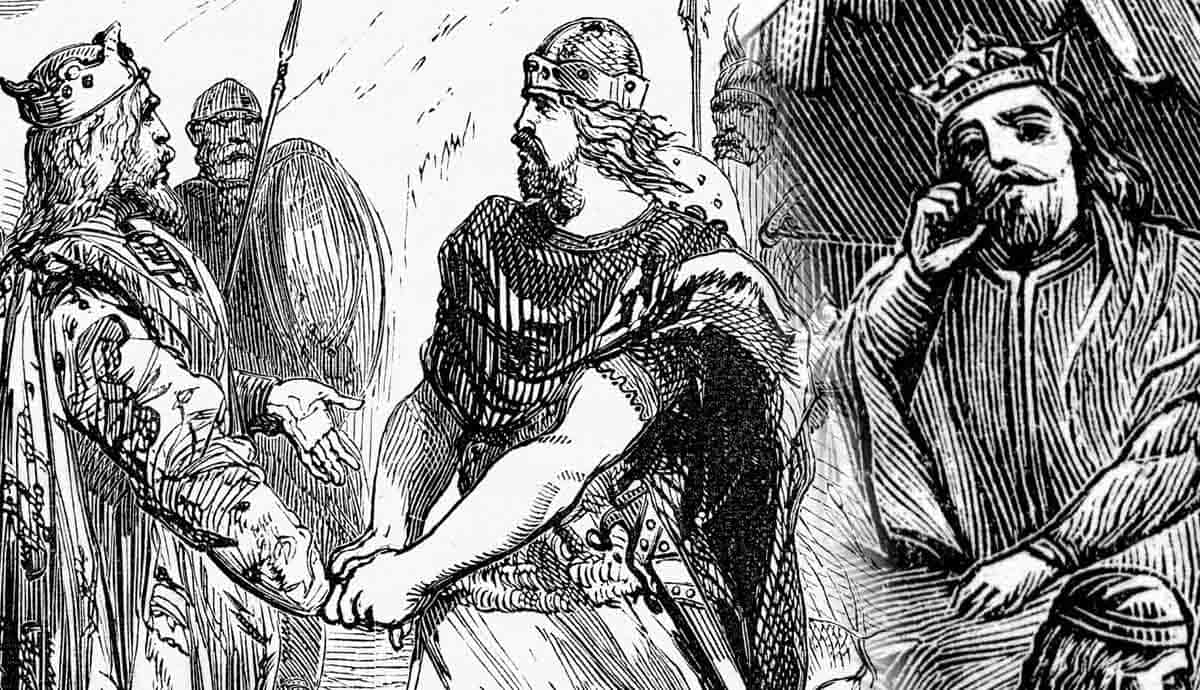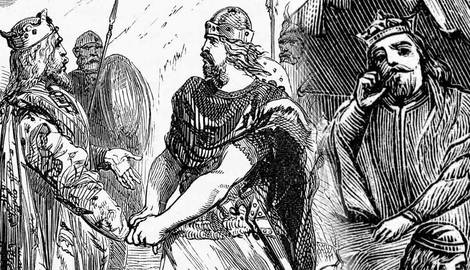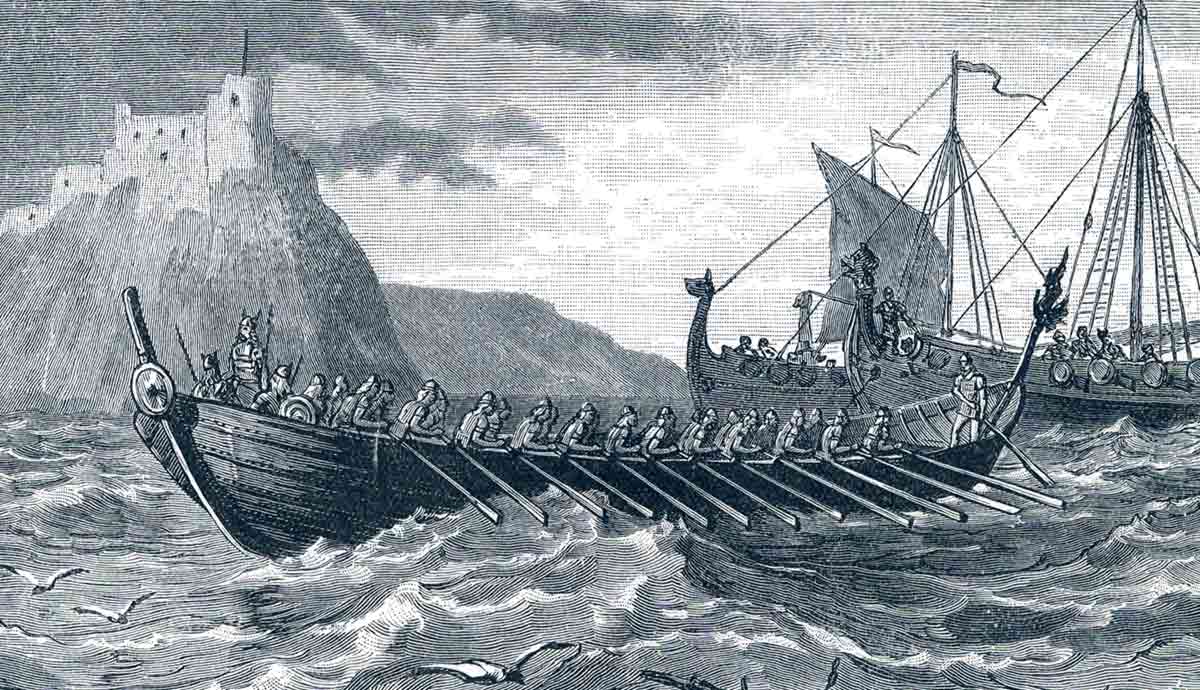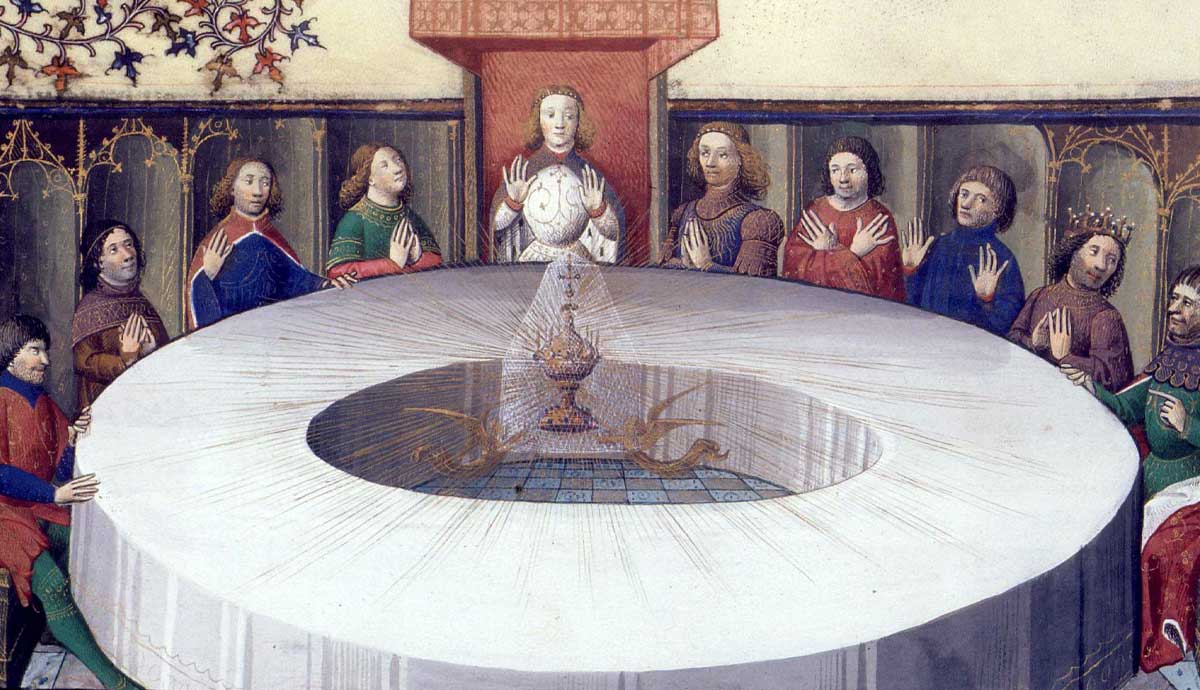
The Vikings mercilessly raided England in the 8th century, ruthlessly took land for themselves in the 9th century, and systematically extorted Danegeld from the locals in the 10th century. Nevertheless, in the early part of the 11th century, Viking kings were recognized as the official kings of England.
Sweyn Forkbeard took England from King Aethelred in 1013, and his son Cnut the Great then ruled as the English monarch and incorporated the territory into his North Sea Empire. He passed England to his sons, Harold Harefoot and Harthacnut, who lost the throne due to the lack of a male heir rather than a military defeat.
Who Was Sweyn Forkbeard?

Sweyn Forkbeard was the son of Harald Bluetooth, one of the first kings of a united Denmark. Bluetooth converted to Christianity around 960 to facilitate a peace agreement with the Holy Roman Emperor. The infant Sweyn was probably baptized at this time.
In the mid-980s, Sweyn reportedly revolted against his father and took control of Denmark, with some sources suggesting that he did so under the banner of traditional paganism. This probably is not the case. While one of his first acts was reportedly to expel the German bishops his father had installed, he replaced them with bishops from England. This, along with the fact he is known to have built churches at Lund and Roskilde, suggests that the move was more about politics than religion. He probably objected to the Holy Roman Emperor interfering in Danish affairs.
After becoming king of Denmark, Forkbeard expanded his influence into Norway. Entering an alliance with Olof Skotkonung, the king of Sweden, and Eirik Hakonarson, the Jarl of Lade in Norway, they took on Olaf Tryggvason, the king of Norway. One surviving saga suggests that the conflict began when Tryggvason insulted Sigrid the Haughty of Sweden when courting her for marriage. He subsequently married Thyri, a sister of Sweyn, who he did not treat well. But it may also just have been an opportune moment to move against Tryggvason. He had made himself unpopular in Norway by using harsh tactics to ensure conversion to Christianity and loyalty to the Crown.

Whatever the immediate motivation, the coalition attacked Olaf in the Baltic Sea when he was sailing home, at the Battle of Svolder in 999 or 1000. Olaf suffered a decisive defeat, though legend says that he may have survived and he continued to show up throughout history as one of those phantom historical figures who never died. He was even reported as being in the Holy Land. The victors divided control of Norway between them, with Sweyn taking the Viken district in the south.
Not long after defeating Tryggvason, Sweyn Forkbeard turned his attention to England. Some sources suggest that he was specifically motivated by the St Brice’s Day Massacre.
St Brice’s Day Massacre

The start of the history of the Vikings in England is usually dated to the raid of Lindisfarne in 789 CE. Regular raids followed, and then waves of settlers looking for new homes. The Vikings established the kingdom of York in 866, and 20 years later in 886, King Alfred the Great of Wessex made a treaty with the Vikings, whom they called Danes. He gave them command over various English territories under the Danelaw Pact. Over the next 100 years, a significant “Dane” community was established within England.
However, from the 980s, Viking raids intensified again, culminating in the Battle of Maldon in 991, which the Anglo-Saxons lost. King Aethelred the Unready was convinced to pay the Vikings off with “Danegeld” equivalent to around 3,300 kilograms of silver (3.6 tons). Of course, as the poet Rudyard Kipling wrote: “Pay them danegeld and then you will never get rid of a Dane.” Over the next ten years, there were many further Viking raids.
Eventually, Aethelred ordered his army to slay all the Danes in England in a massacre that took place on November 13, 1002, St Brice’s Day. It is unclear who “all the Danes” were and whether this included peaceful settlers, women, and children. But there is evidence of the impact of the massacre. A royal charter from 1004 CE remarks on the “most just extermination” of the Vikings at Oxford. It describes the rebuilding of the local church after it was burned down to kill the Danes taking shelter inside to avoid the bloodshed.

In 2008, archaeologists discovered the bodies of 37 people under St John’s College, Oxford, believed to be victims of the massacre. The bodies include 35 males aged 16 to 25 and two children. Chemical analysis suggests that they were Vikings, and the bodies have been dated to c. 960-1020. The bodies are unarmed and show no defensive wounds, with most of their wounds in the back, suggesting that they were fleeing.
Another group of 54 bodies has been found at Ridgeway Hill. The mass grave contains 54 male bodies that isotope analysis suggests were Vikings, who died around 970-1030, again suggesting a connection with the massacre. All the bodies were beheaded and the heads separated for burial.
Sweyn Forkbeard in England

It is generally suggested that Sweyn Forkbeard’s move to England was to seek revenge for the St Brice’s Day Massacre, as it may have been his men who were responsible for the raid in the 990s. One source also suggests that Forkbeard’s sister Gunnhilde and her husband Pallig Tokesen were both killed in the massacre, making it personal. However, just as the case with Olaf Tryggvason, it may also have just been an opportune moment. Before starting his campaign, Forkbeard organized the right to sell the spoils of his raids to the Duke of Normandy.
Sweyn and his men raided Wessex and East Anglia in 1003-1004 before famine forced them to return to Denmark in 1005. He returned in 1006-1007 and 1009-1012, extorting large amounts of Danegeld from the population. But despite taking money not to raid, Forkbeard launched a full-scale invasion of England in 1013.

According to the Peterborough Chronicle, part of the Anglo-Saxon Chronicle, Sweyn landed his fleet at Sandwich, near Dover. He sailed up the Humber River to attack East Anglia with what is described as an overwhelming force. The Earl of Northumbria was the first to submit, followed by the Kingdom of Lindsey, and then the Five Boroughs, the five major Danish towns in Mercia. He took hostages from every kingdom that submitted and required them to provision his men. This gave him fresh men when he went south to Oxford, Winchester, London, and Bath.
Aethelred was forced to send his two sons, Alfred and Edward, to Normandy for protection; to the same Duke of Normandy who had agreed to buy English spoils of war. He followed them into exile by the end of the year 1013, leaving Forkbeard as the new king of England. He set up his court at Gainsborough in Lincolnshire but did not enjoy his success for long. He died in unknown circumstances on February 3, 1014. His body was returned to Denmark to be buried.
Cnut the Great, King of England

After his death, Sweyn’s eldest son Harald II succeeded him in Denmark and his younger son Cnut, who had accompanied him on the campaign, succeeded him in England. Cnut (also known as Canute) was reportedly Forkbeard’s son with a Polish princess. He learned soldiery during his father’s campaigns in England.
Cnut’s succession in England was not smooth. When Forkbeard died, the English recalled Aethelred and his eldest son Edward from Normandy and they led an army against Cnut, who was forced to flee to Denmark. While there, he gathered a significant fleet with the help of his brother, Polish allies, and Sweden, since Forkbeard had married Sigrid the Haughty of Sweden. In 1015, Cnut landed in England with 200 ships and 10,000 men.

18 months of intense warfare followed. Wessex submitted to Cnut in late 1015 when Mercia and other Wessex allies defected to Cnut. He then marched through Northumbria, taking the territory with relative ease. Meanwhile Aethelred retreated to London, where he died in April 1016. Cnut then laid siege to London, while also fighting Edmund and his troops in the field. The decisive victory came in October 1016. Cnut and Edmund agreed that all of England north of the Thames would go to Cnut, while everything south including London would stay with Edmund, but that possession of this land would go to Cnut on Edmund’s death. He died on November 30 of the same year, making Cnut the undisputed king of England.
Cnut was officially crowned by the Archbishop of Canterbury in 1017. He further consolidated his power by executing many English nobles, replacing them with loyal earls and jarls organized in the Scandinavian style. He then married Emma of Normandy, the widow of Aethelred, in 1018. He was soon secure enough to send most of his army home, reportedly with 26,900 kilograms (29.6 tons) of silver collected from across the country plus 3,900 kilograms (4.3 tons) collected from London alone, keeping just 40 ships as his personal bodyguard.
Cnut and the North Sea Empire

Cnut’s kingship provided protection against Viking raids, which had mostly been carried out by his kinsmen, allowing England to thrive. Meanwhile, his English resources helped Cnut expand his territory in Scandinavia.
When Cnut’s brother Harald died in 1018, Cnut went to Denmark to secure his claim. He was apparently not welcomed with open arms by everyone and seems to have carried out attacks against the Wends, who were Slavic allies, to secure his position. Nevertheless, by 1020, his position was stable enough to return to England, appointing his brother-in-law as regent in Denmark. He also made him the guardian of his young son by Emma, Harthacnut, who was designated heir to the kingdom.
But when Cnut returned to England, the Norwegians and Swedes allied to attack Denmark. Cnut returned and defeated them at the Battle of the Helgea in 1026, leaving him as the dominant leader in all of Scandinavia. Not long after this, he wrote a letter in which he declared himself king of all of England, Denmark, Norway, and some of the Swedes. He was officially crowned king of Norway at Trondheim in 1028. He also received tribute from the Slavic Wends, was allied with the Poles, made vassals of several high kings of Scotland, and received Danegeld from the Welsh and the Irish.
He was now a sufficiently powerful ruler that he was invited to Rome in 1027 to witness the coronation of Conrad II as Holy Roman Emperor. Cnut remained the leader of his North Sea Empire until his death in 1035.
Cnut’s Successors and Losing England

When Cnut died in 1035, he was succeeded in Denmark by his son Harthacnut, but he was rejected by the English as a foreign ruler. His mother, Emma of Normandy, was forced to flee and Cnut’s younger half-brother Harold Harefoot claimed power until his death in 1040. Following Harald’s death, Harthacnut was invited to take the throne, but he still sailed to England with his mother and a fleet of 62 warships to ensure his claim.
Harthacnut was probably already quite ill when he took the English throne, so in 1041, under the influence of his mother, he recalled his half-brother Edward the Confessor, the son of Emma with Aethelred the Unready, back to England and recognized him as his heir. So, when Harthacnut died in 1042, control of England returned to the sons of Aethelred, against whom Sweyn Forkbeard and Cnut had fought so long. Viking control of England ended with a fizzle rather than a bang. Nevertheless, this arrangement wouldn’t last long, with the death of Edward leading to the Norman invasion of 1066 and the complete transformation of Anglo-Saxon England.










